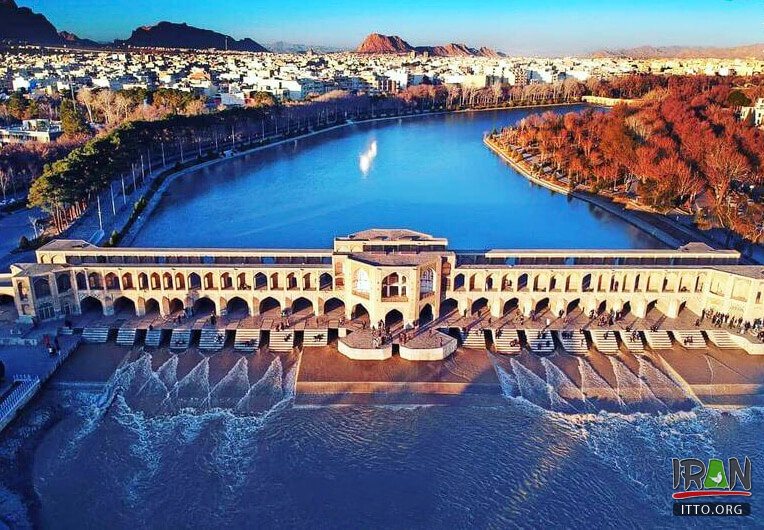The Zayandeh Rood (Zayanderud or Payandehrud) is one of the most important rivers of the central plateau of Iran. This Rivere has come to be known by this name, due to the various gushing springs on its course, that is from its source to the mouth.
The river takes its source in the northeastern front of Zard Kooh-e-Bakhtiari (Zardkuh) from Zagros Mountains in Chaharmahal and Bakhtiari Province in the vicinity of Cheshmeh Deymeh, and flows to the marshes of Gavkhoony (Gavkhooni Wetland). The maximum length of this river is 420 km and its width ranges from 10 to 20 m in the valleys and varies till 800 m in the city of Isfahan (Esfahan).
The Kooh-Rang tunnel aids in adjoining a part of the waters of the Karoon river to the Zayandeh Rood. Throughout its course, the presence of lush green thickets adds to the beauty and the pleasant environment, which attributes to the recreational atmosphere. Furthermore, alongside the banks of this river, in the city of Isfahan and near the Zaman Khan Bridge (between Isfahan and Chahar Mahal and Bakhtiyari), can be considered as an excellent spot for recreational purposes.

Zayandeh River crosses the city of Isfahan, a major cultural and economic center of Iran.
People have lived on the banks of Zayandeh River for thousands of years. The earliest evidence of human occupation along the River is found in a cave site called Qaleh Bozi near Dizicheh at SW of Isfahan. More than 40,000 years ago, groups of Paleolithic hunters (Neanderthals) used Qaleh Bozi caves as shelter for seasonal or temporary occupations and left their stone tools and bones of hunted animals. An ancient prehistoric culture, the Zayandeh River Civilization, flourished along the banks of the Zayandeh in the 6th Millennium BC.
Zayandeh River crosses the city of Isfahan, a major cultural and economic center of Iran. In the 17th century, Shaikh Bahai (an influential scholar and adviser to the Safavid dynasty), designed and built a system of canals (maadi), to distribute Zayandeh water to Isfahan's suburbs. Water from the Zayandeh River helped the growth of the population and the economy, helped established Isfahan as an influential center, and gave a green landscape to Isfahan, a city in the middle of a desert. The Zayandeh river bed is spanned by many historical Safavid era bridges, and the river used to flow through many parks.
There are several new and old bridges (pol) over the Zayandeh River. The oldest, Shahrestan, built in the 5th century AD, is still in use as a pedestrian crossing in Sharestan village.

The river takes its source in the northeastern front of Zard Kooh-e-Bakhtiari (Zardkuh) from Zagros Mountains in Chaharmahal and Bakhtiari Province in the vicinity of Cheshmeh Deymeh, and flows to the marshes of Gavkhoony.
Old Bridges on Zayandeh River in City of Esfahan:
Marnan pedestrian Bridge (1599), Vahid Bridge (1976), Felezi Bridge (1950), Si-o-se Pol pedestrian (1632), Joui Bridge (17th century), Khaju Bridge (1650), Shahrestan bridge (11th century & foundations back to the 5th century AD).
In the section of the Zayandeh River crossing Esfahan, bridges, parks, paddle boats and traditional cafes and restaurants amongst the rest of Esfahan rich cultural heritage, are major tourist attractions for Iranian as well as international visitors.

